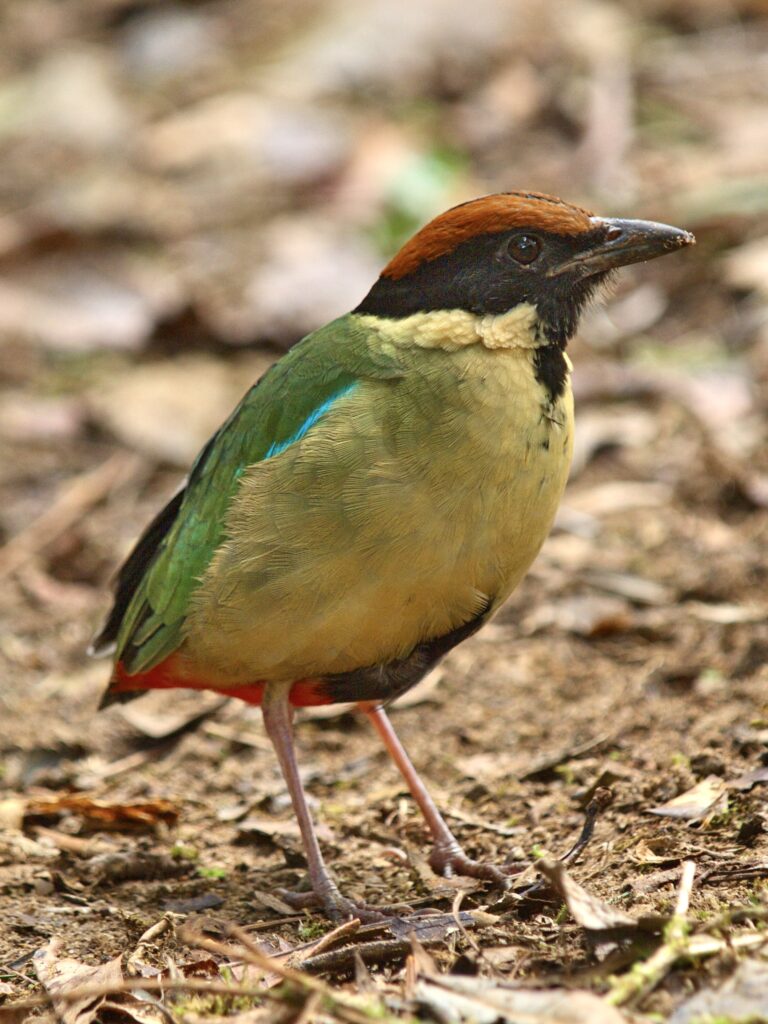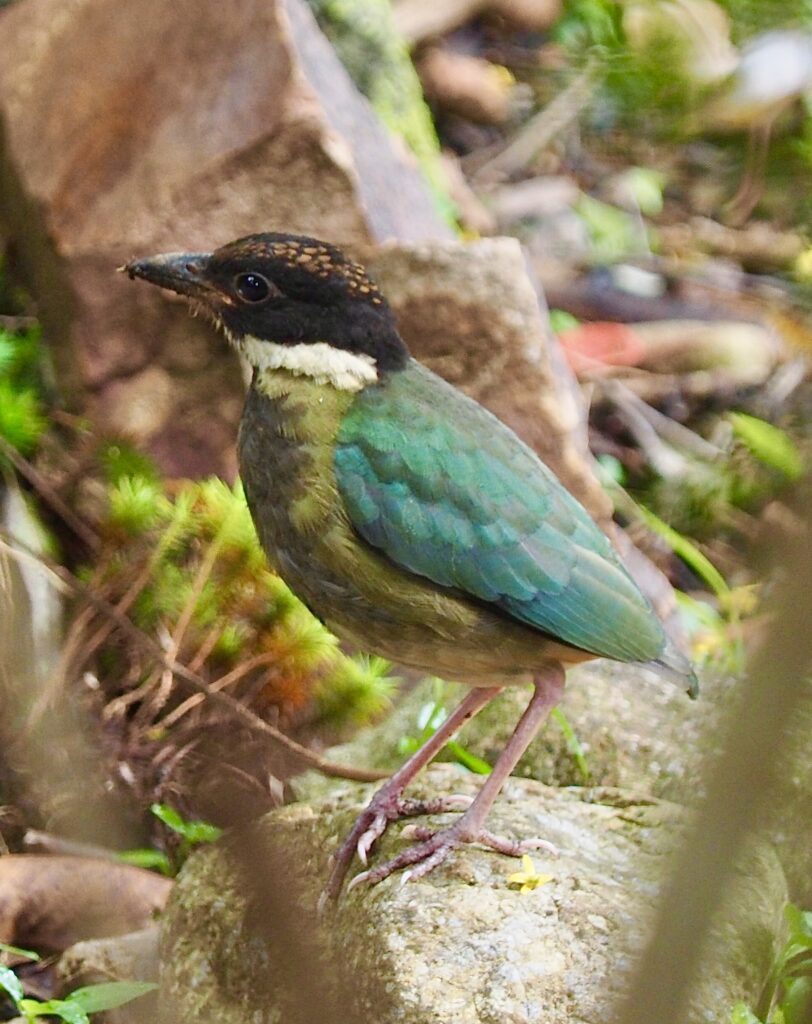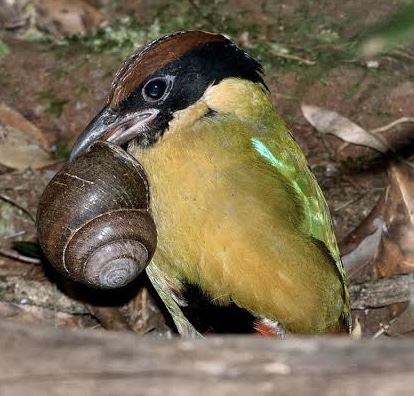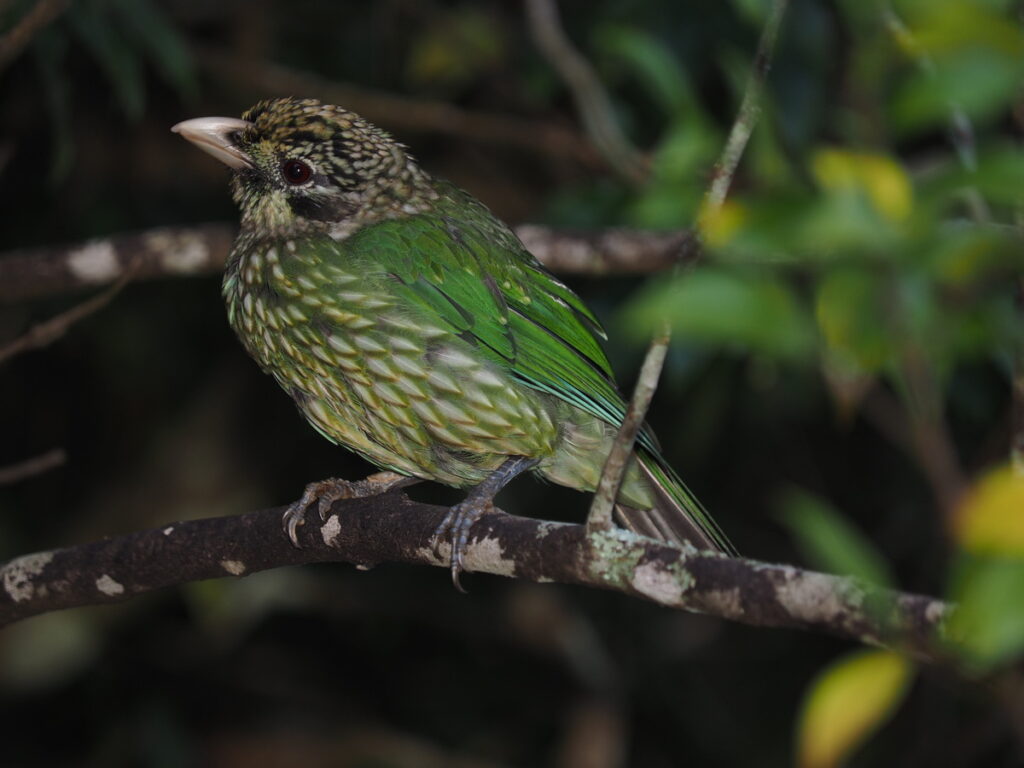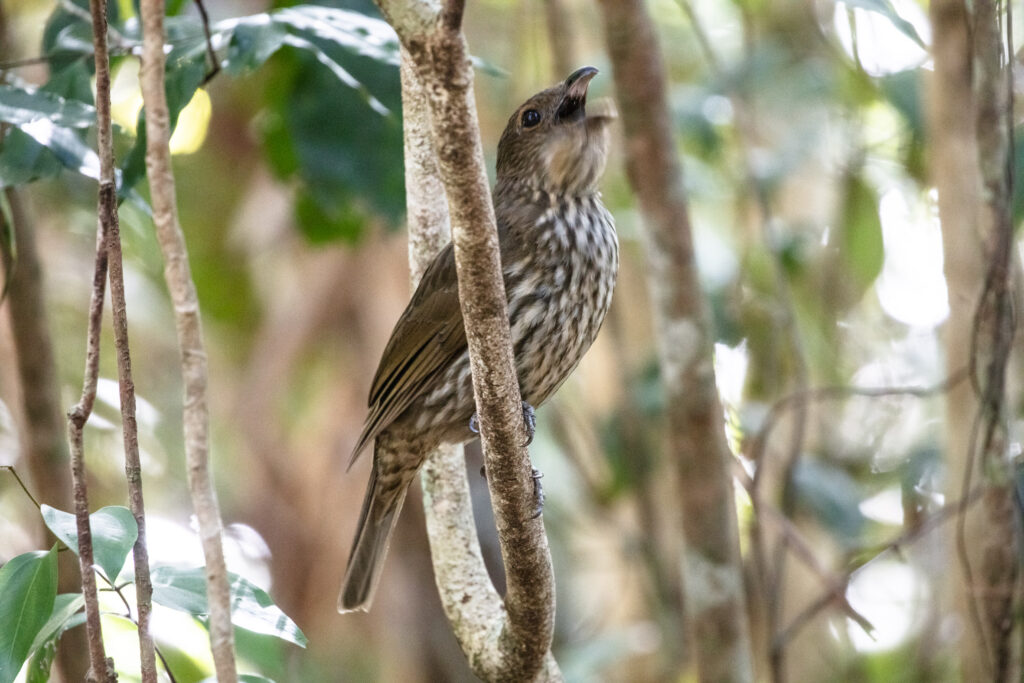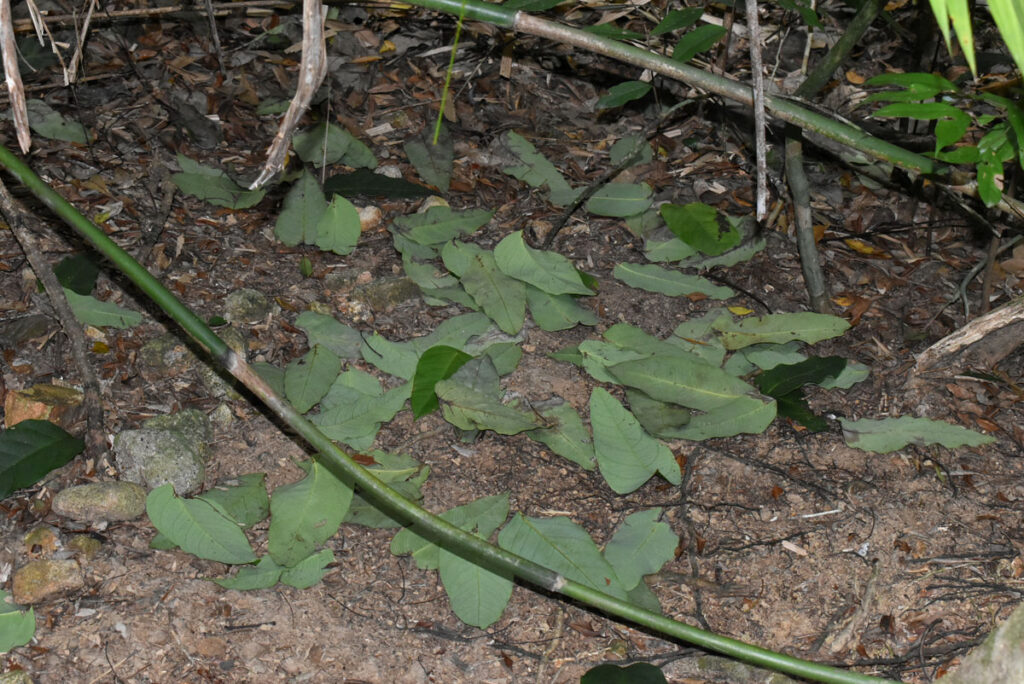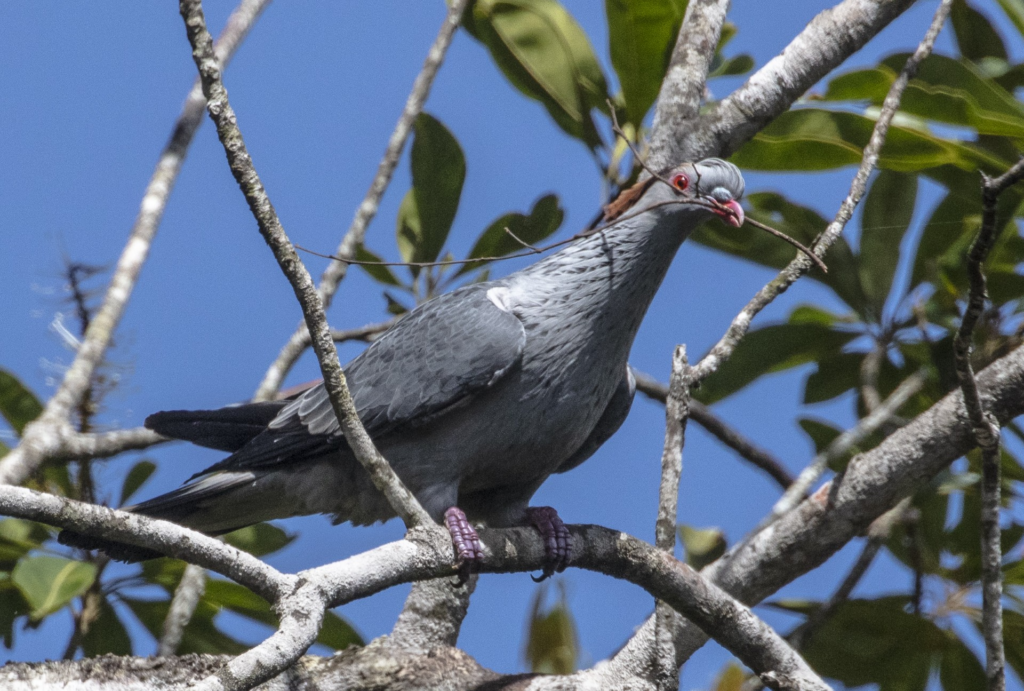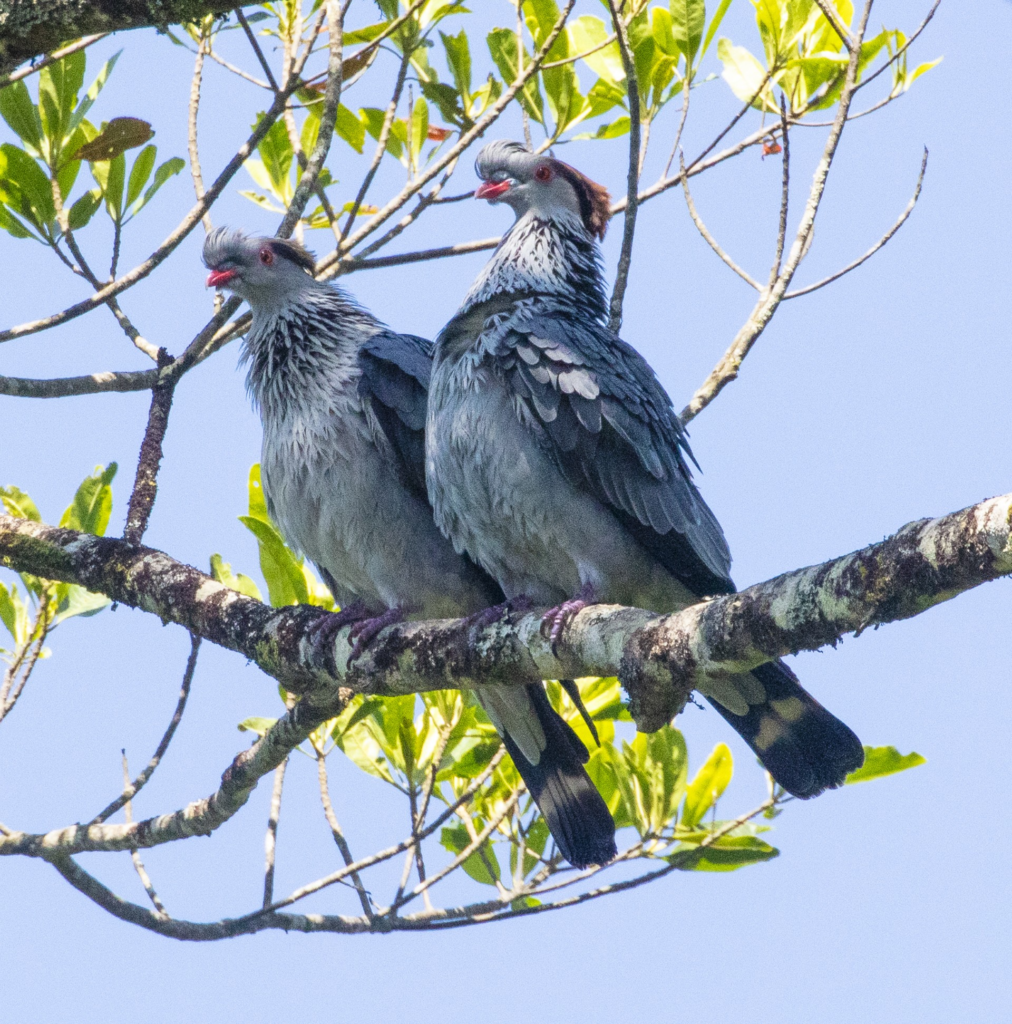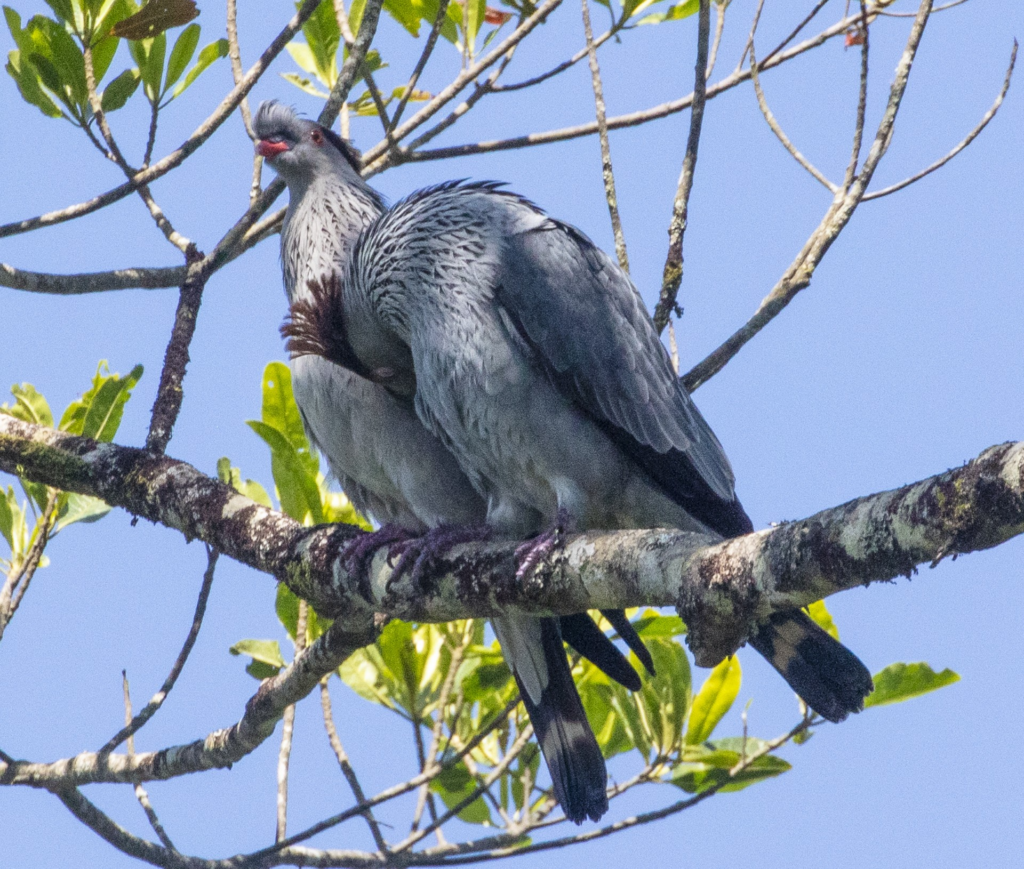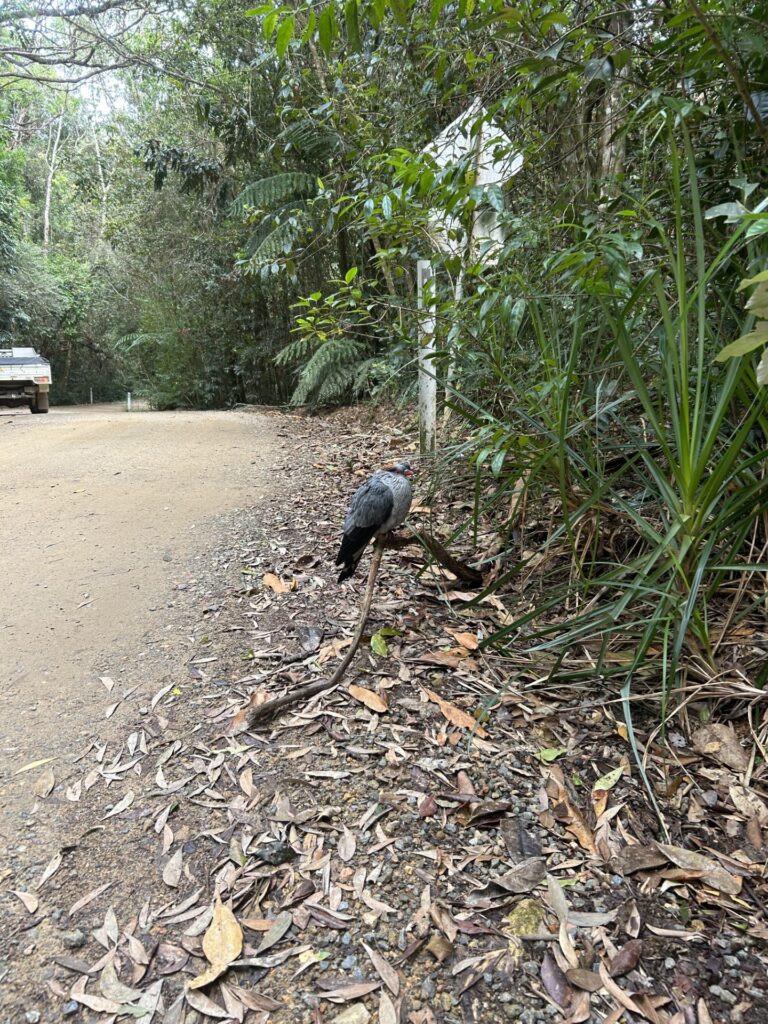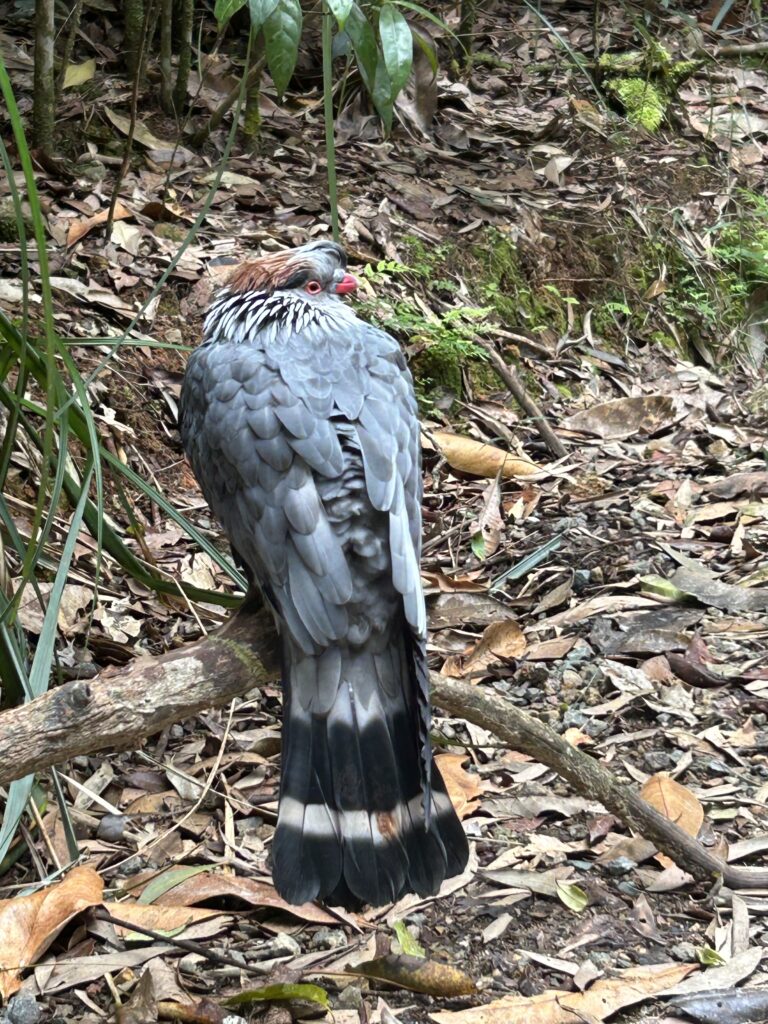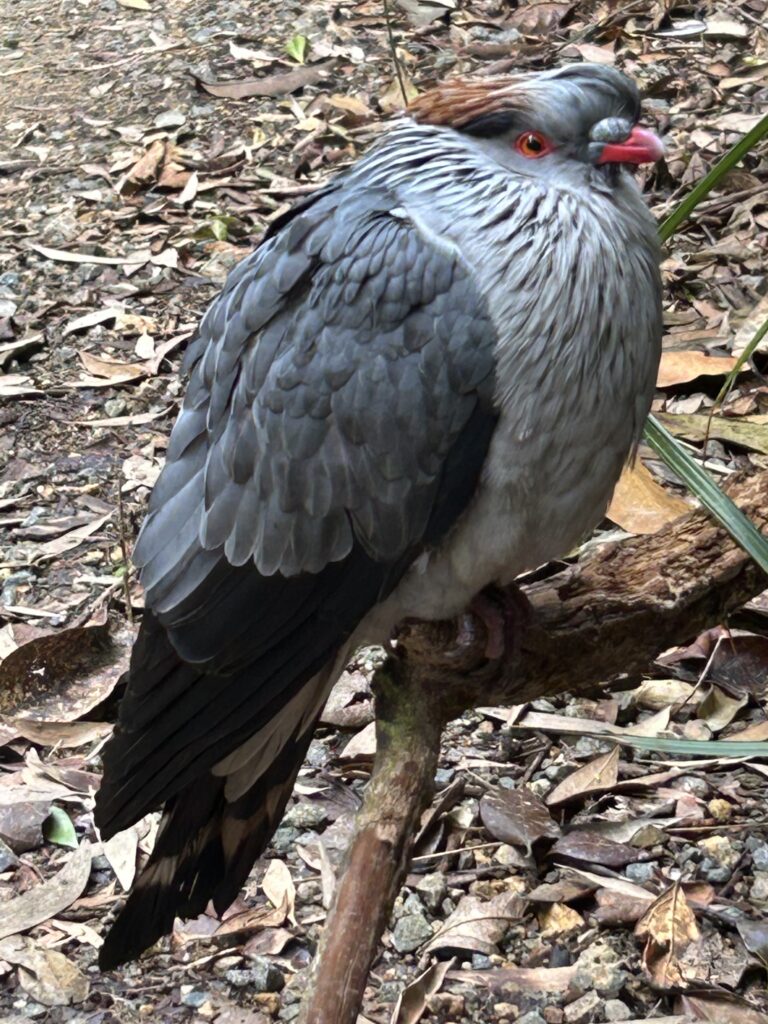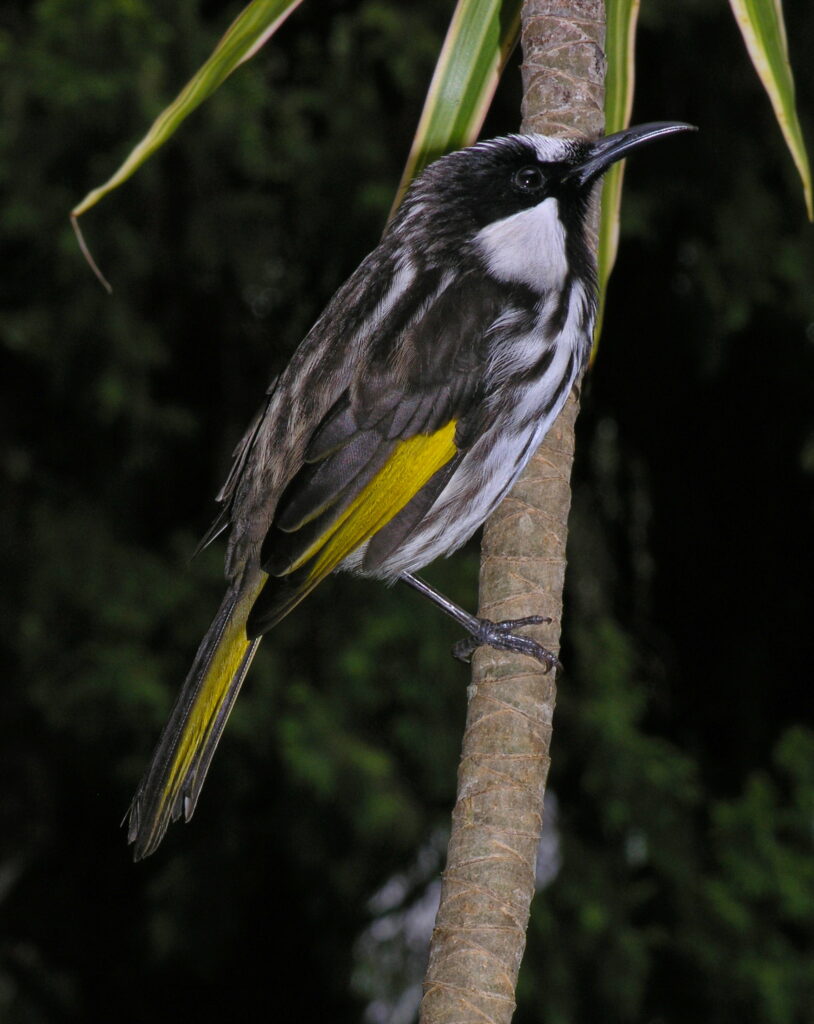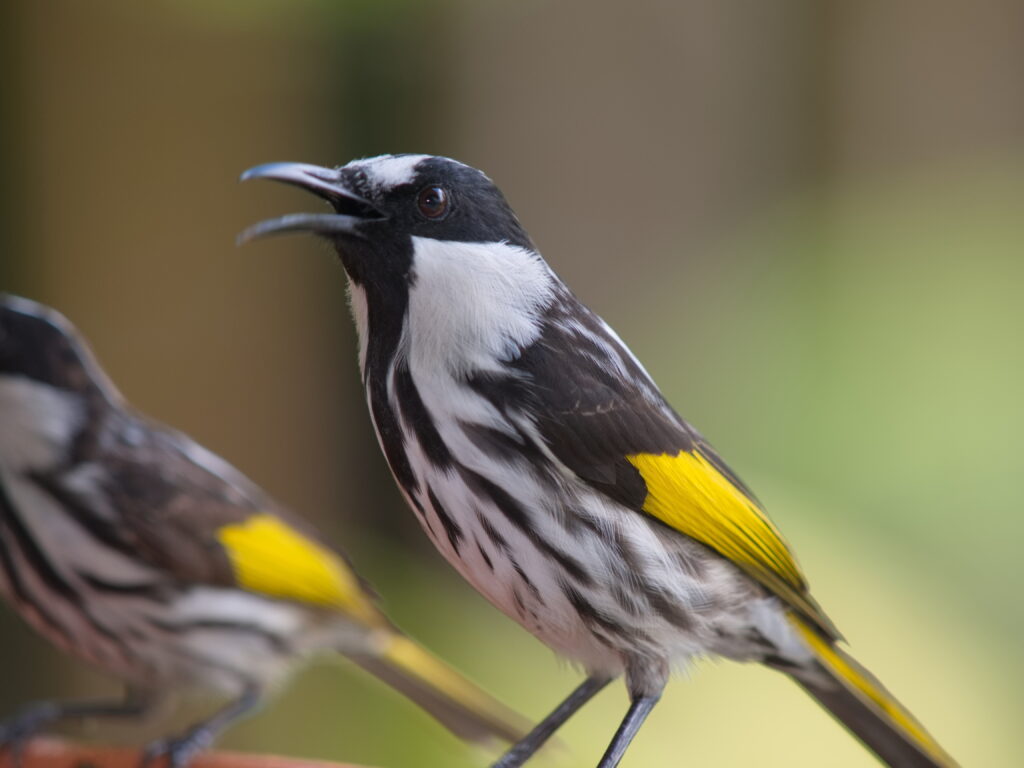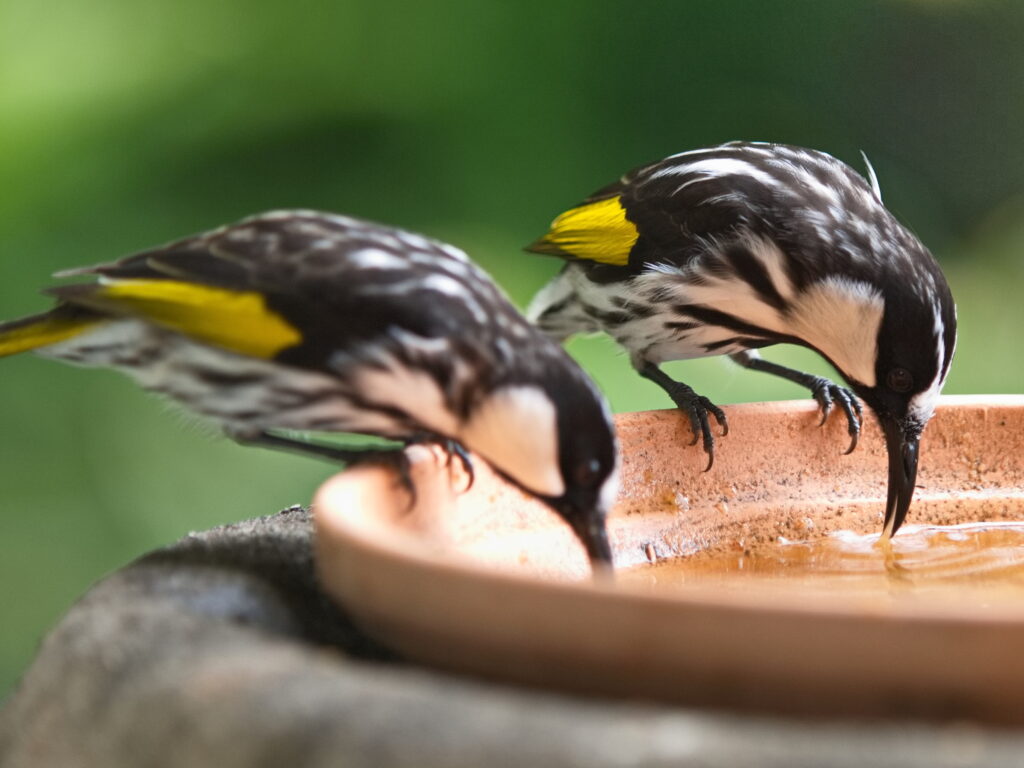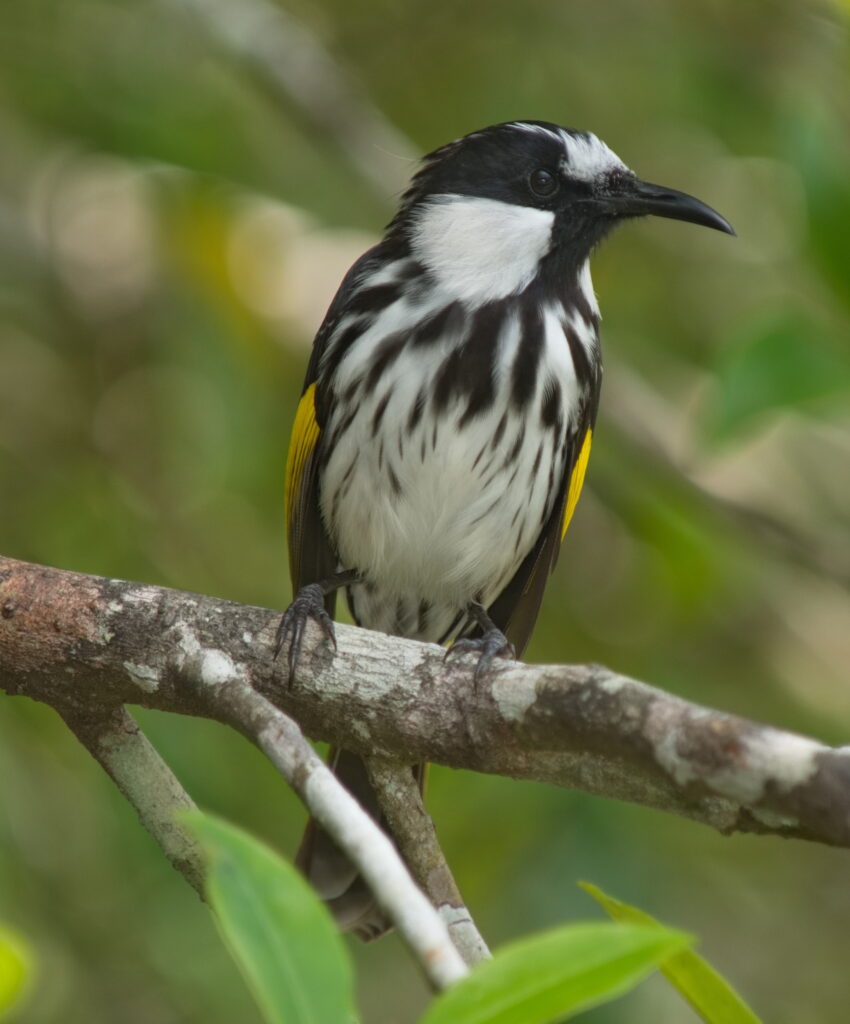The Wet Tropics crimson rosella (Platycercus elegans nigrescens) is commonly seen at Paluma delicately feeding on lawn seeds or flowers like the Albizia outside the Ivy Cottage.

P. e. nigrescens is the smallest of sub-species of the widely distributed crimson rosella. The sub-species was first described in 1988 by Edward Pierson Ramsay who noted its darker crimson plumage, black back and nape, and smaller size yet larger bill. It was also known as “northern crimson parrot” or “Campbell’s parakeet”, after Alexander James Campbell.
Wet Tropics crimson rosella is an appropriate common name based on its limited distribution.
In the breeding season, Wet Tropics crimson rosellas will only forage with their mate. Outside of the breeding season, crimson rosellas tend to congregate in pairs or small groups and feeding parties. The largest groups are usually composed of juveniles, who gather in flocks of up to 20 individuals, usually much fewer at Paluma. When they forage, they are conspicuous and chatter quietly.
Mutual preening is not exhibited by the playcercus genus, and the courtship display is simple; the male waves his tail sideways, and engages in some head bobbing, and the female reciprocates.
The female chooses the nest site. Like most parrots, they are cavity nesters, generally nesting high and in deep cavities in older large trees in forested areas. They generally have a clutch size of several eggs which are incubated for around 21 days by the female alone. The male feeds the female through this time and for some time after incubation concludes. Quickly covered in white down, chicks take around five weeks to fledge.
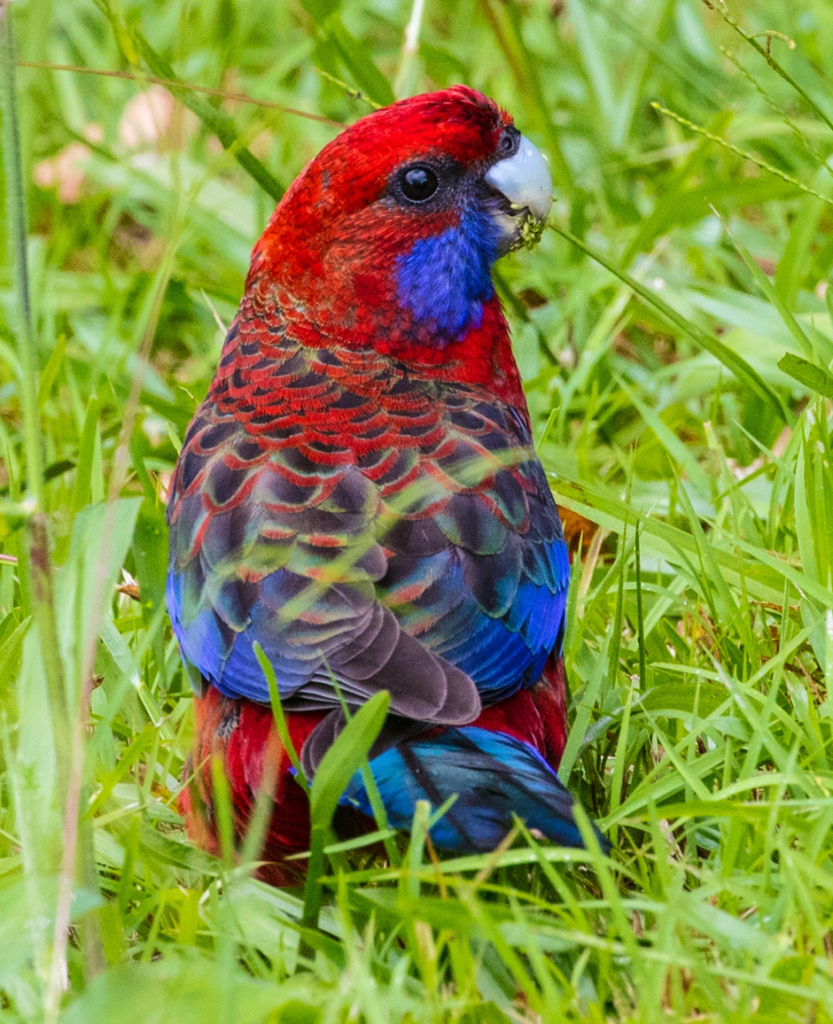
Platycercus are most proprietorial of their nesting sites. During the breeding season, it is common for females to fly to other nests and destroy the eggs and in fact, this is the most common cause for an egg failing to hatch. This behaviour is thought to be a function of competition for suitable nesting hollows, since a nest will be abandoned if all the eggs in it are destroyed.
A pair of rosellas will tend to nest in the same area from year to year during their 20-year lifespan.
The name rosella is said to have come from the first encounters of Early European settlers with eastern rosellas at Rose Hill, New South Wales, now Parramatta, and so they called it the Rosehill parakeet, which became “Rosehiller”, and eventually “rosella”.
The species as it now stands has subsumed two former separate species, the yellow rosella and the Adelaide rosella. Molecular studies show P. e. nigrescens, one of the three red-coloured races, is genetically more distinct.
Compiled by Peter Cooke from a variety of sources, mostly Wikipedia.
Photos also by PC.






